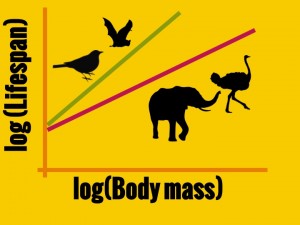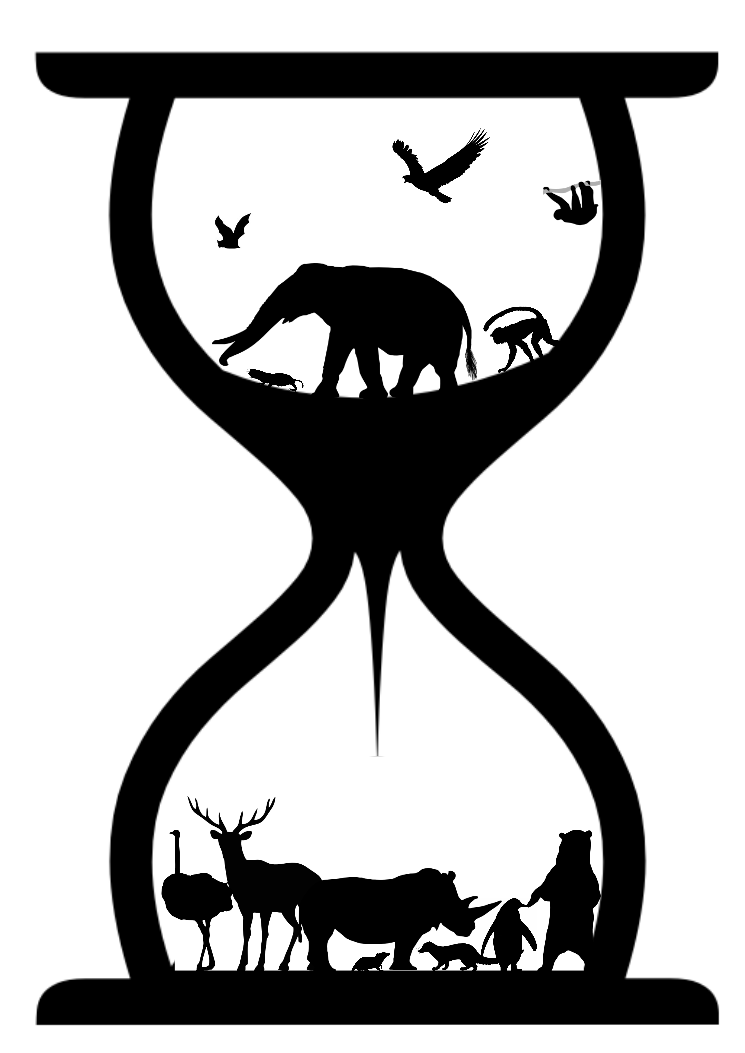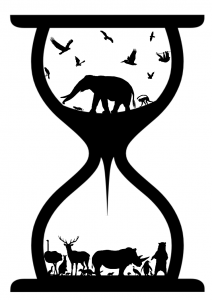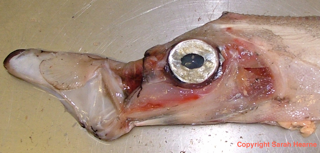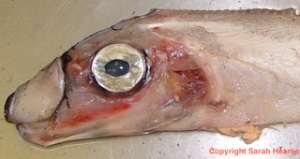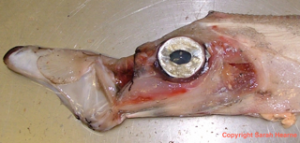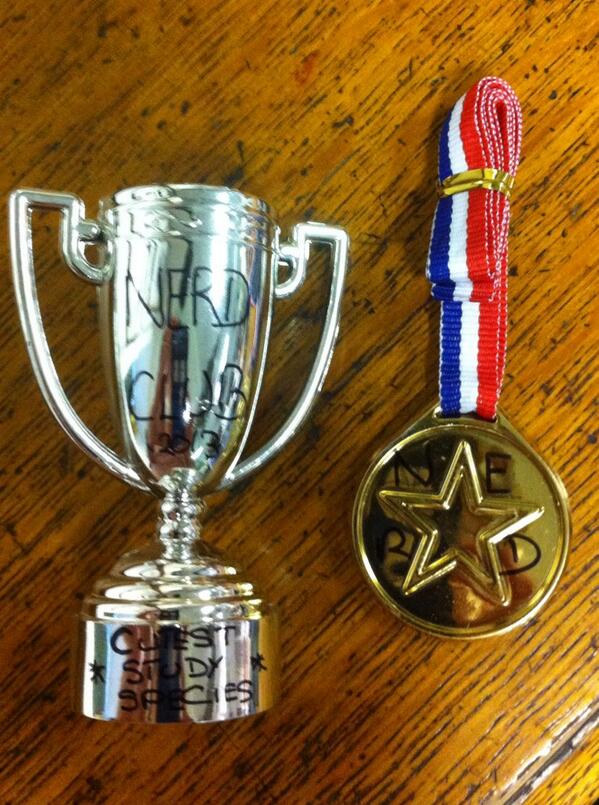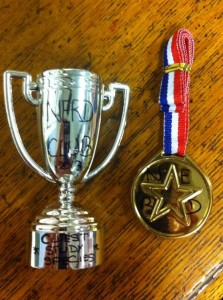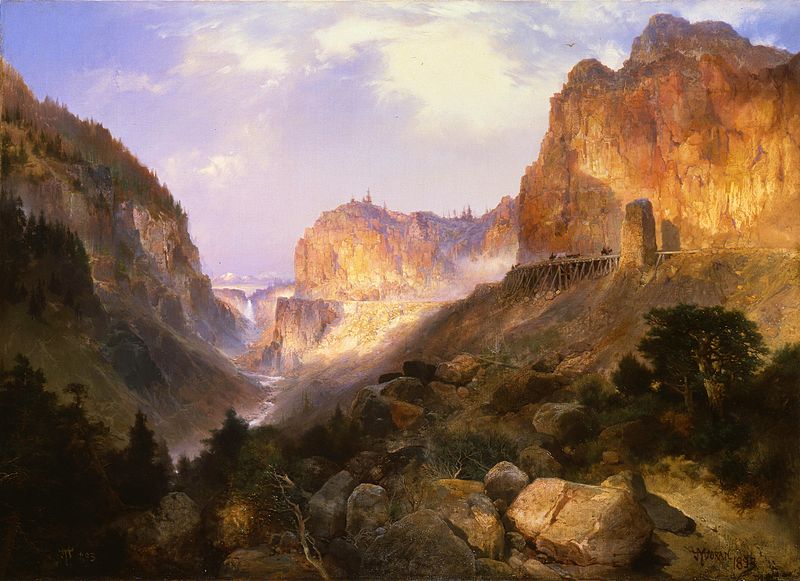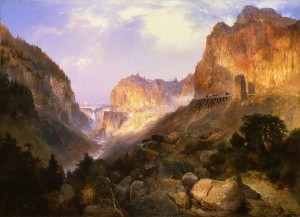Last week our newest EcoEvo@TCD paper came out in PRSB (it will be Open Access soon but currently it’s behind a pay wall – feel free to email me for a copy in the meantime. Code for the multiple PGLS models can be found here). This paper is exciting for me for two reasons – firstly because the science is really cool and secondly because of how it came about. In a previous post I explained the results of the paper. Today I want to focus on how it came about. Continue reading “Dying without wings: Part II”
Dying without wings* Part I
Last week our newest EcoEvo@TCD paper came out in PRSB (it will be Open Access soon but currently it’s behind a pay wall – feel free to email me for a copy in the meantime. Also code to fit multiple PGLS models can be found here). This paper is exciting for me for two reasons – firstly because the science is really cool, and secondly because of how it came about. Today I want to focus on the paper itself, and in my next post I will explain how this collaborative project started. Continue reading “Dying without wings* Part I”
Soapbox Science Ireland

Are you interested in science?
From nano-materials to Martian landscapes, microbiology to neuroscience, immunology to ecology, chemistry to evolution, Soapbox Science Ireland has something for you.
On the 26th of April (this Saturday!), Soapbox Science will join efforts with Trinity College Dublin’s Equality Fund and WiSER to transform Trinity’s Front Square into a hub of scientific learning and discussion. Some of Ireland’s leading female scientists take to their soapboxes to showcase science to the general public. The aim is to dispel the myth that scientists conform to the “mad (male) scientist” stereotype and to promote the fascinating research led by women in Ireland. Continue reading “Soapbox Science Ireland”
SoapBox Science Dublin!
 Are you a woman in science? Are you passionate about sharing your research with the public and increasing the profile of female scientists generally? Do you let out a sigh when these events are always arranged in London? Well sigh no more, this year SoapBox Science is expanding to other parts of the UK and excitingly, across the Irish Sea to Dublin, Ireland. Continue reading “SoapBox Science Dublin!”
Are you a woman in science? Are you passionate about sharing your research with the public and increasing the profile of female scientists generally? Do you let out a sigh when these events are always arranged in London? Well sigh no more, this year SoapBox Science is expanding to other parts of the UK and excitingly, across the Irish Sea to Dublin, Ireland. Continue reading “SoapBox Science Dublin!”
Join us!
 It’s that time of year again at EcoEvo@TCD where we start looking for people to apply for Irish Research Council fellowships to come and join us as postdocs or PhD students. These awards are open to anyone, regardless of nationality. Details can be found here(PhD funding) and here (postdoc funding).
It’s that time of year again at EcoEvo@TCD where we start looking for people to apply for Irish Research Council fellowships to come and join us as postdocs or PhD students. These awards are open to anyone, regardless of nationality. Details can be found here(PhD funding) and here (postdoc funding).
But why would you want to join us? I can talk (type?) at length about this but maybe the best people to ask are the students and postdocs we already have working here. So here are their comments instead!
Thomas Guillerme @TGuillerme
Supervisor: Natalie Cooper (Zoology)
As a French student, starting a PhD in this department was made really easy by the people working here. Not only the academic work and projects are really exciting, but also the social part of the department makes work really easy going and fun.
Deirdre McClean @deirdremclean1
Supervisor: Ian Donohue (Zoology)
I can’t recommend the zoology department enough as a place to do a PhD! This is largely due to the great diversity of projects going on and the close relationships between staff and students. Collaboration is greatly encouraged and there is so much opportunity for this through NERD club, tea breaks and pub trips! We have a really nice mix of empirical and theoretical projects meaning that we get really different and interesting perspectives on our work, which I think has been great in my development as a scientist. Being in a small department has a lot of advantages and it means I always find so much support from my supervisor, other PhD students and other staff. Because of the friendly atmosphere and the variety of research groups and backgrounds, lunchtimes, tea breaks and pub visits provide great opportunities for getting input on your work, coming up with new ideas and having debates! There is also a lot of opportunity for teaching, outreach and collaborating with other groups/departments. The campus here is beautiful and right in the centre of town so it’s a really nice place to work and socialize too!
Shane Mc Guinness @S_Mc_G
Supervisor: Anna Davies (Geography)
Without the support, funding and independence provided by IRC funding, my amibitions to study endangered species conservation and human development in Africa would not have been realised. In addition, the increasing integration of the School of Natural Sciences makes this a truly interdisciplinary environment to work in.
Karen Loxton @LoxtonKaren
Supervisor: Celia Holland (Zoology)
From fantastic supervisors to technicians who seem able to solve any problem, the Zoology Dept. has been an amazing place to study for a PhD. Staff are generous with their time and expertise and the seminars and EcoEvo group are a great way to keep up to date with research outside your own. The diversity of projects within the department ensures that pub conversations are always an opportunity to learn something new and interesting.
Kevin Healy @healyke
Supervisor: Andrew Jackson (Zoology)
So far I have really enjoyed doing my PhD in the Zoology department, mostly this is due to the fact that we get the opportunity to work on loads of cool collaboration projects (right now I’m working on a T.rex paper due to a bet in the pub on who could have a dinosaur paper first) but also because there is a very relaxed social vibe to the department as well. I think my development as a scientist over the last two years is also really down to the amount of support from not just my supervisor but all the other members of staff, whether its from our NERD club meetings, going to conferences or just a lively debate at lunch. It also helps that the department is right in the middle of Dublin so there’s plenty of pubs to continue work after 5!
Sive Finlay @SiveFinlay
Supervisor: Natalie Cooper (Zoology)
The Zoology Department is a lovely home for a PhD student. There is a very relaxed, friendly atmosphere with plenty of opportunities to mix with and learn from staff, postdocs and fellow students. We’re a relatively small department but that is definitely to our advantage because you get to know people from diverse research backgrounds and you’re not lost in the anonymity of being yet another student in a large research lab. In the past few years there’s been increased collaboration and integration across the School of Natural Sciences through our NERD club meetings, postdoc talks, weekly seminars from invited speakers and via the EcoEvo blog, all of which are great for getting out of the bubble of being stuck in your own project. There are also plenty of opportunities to get involved in teaching, collaborative projects, fun outreach events and of course a healthy amount of socialising… What’s more, Trinity is a great university with a beautiful campus in the centre of the city – not a bad place to work!
Seán Kelly @seankelly999
Supervisors: Nicola Marples and Dave Kelly (Zoology)
The Zoology Department and the School of Natural Sciences are full of friendly and welcoming students and staff from a great variety of backgrounds. I never fail to find support or advice on my PhD project when it’s needed, whether from my supervisors, other staff or students. The diversity of expertise within the department is a real asset; one that is readily available to you. Integration within and between the various departments is ever increasing and collaboration is greatly encouraged. Lunchtime conversations often turn into lively debates and sometimes lead to new collaborative projects. There’s ample opportunity for teaching experience, group learning and social outreach, as well as socialising, of course.
Sarah Hearne @SarahVHearne
Supervisor: Ian Donohue (Zoology)
I was nervous moving to a new university to study a new field of biology, but I shouldn’t have been. The department is incredibly friendly and welcoming and there is a great spirit of collaboration. This isn’t a place to hide away for three years, it’s a place where discussions are had or ideas spawned over a pint in the pub or during a lunch break. People share their successes and commiserate over failures. Some great science is done as well!
Adam Kane @P1zPalu
Supervisor: Andrew Jackson (Zoology)
The Zoology department has a great group of scientists who are interested in each other’s research which makes for excellent collaborative opportunities. The best advertisement I can give for it is that I don’t dread getting out of bed on a Monday morning.
Katherine Webster
Supervisor: Ian Donohue (Zoology)
Being part of the dynamic and interactive EcoEvo group in the School of Natural Sciences has greatly enhanced my experience at Trinity as a postdoc. From the students to faculty, you gain valuable feedback into your own research while learning about new ideas that expand your own perspectives. Being in Dublin and walking the hallowed grounds of Trinity College certainly adds to the experience!
If you’re interested and have a member of staff with appropriate research interests in mind, please get in touch! Contacts and research profiles of staff can be found here. Note that, unfortunately, the application success rate is fairly low and the applications themselves take a bit of effort to fill in for both the applicant and the academic who supports the application. Because of this we won’t be able to support every person that contacts us. But we promise to be realistic about your chances of getting funding. This is judged on your CV, the project, and the fit of the project to the chosen supervisor. The call opens in November and the deadline is January.
Author: Natalie Cooper, ncooper[at]tcd.ie, @nhcooper123
Image: Wikimedia commons
Sea Serpents off the Port Bow!
Below the thunders of the upper deep,
Far far beneath in the abysmal sea . . .
[Tennyson, The Kraken]
Strange things are stirring from the deep. Creatures from myths and legends, the sea serpents of old, are descending upon our shores to warn us of impending doom. . .
Well, maybe not. But the news that not one but two mysterious oarfish have been found dead and beached in California recently has spread around the world, reminding people that the oceans still harbour creatures that are stranger and more alien to us than even the most hallucinogen-induced science fiction creations.
Oarfish are members of the genus Regalecus. There are three species, R. glesne, R. kinoi, and R. russelii, found in the Atlantic, Eastern-Central Pacific and Indo-Pacific respectively. They are the largest bony fish in the world and can reach over 11m in length. Very little is known about them. Unfortunately most of the published literature concerns their meristics which are important but make for incredibly dull reading.
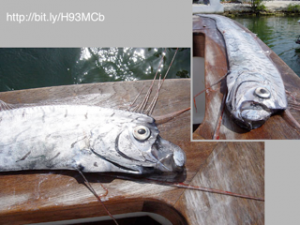
Regalecus is one of two genera in the family family Regalecidae. The other genus, Agrostichyhtys, is monospecific and contains the species A. parkeri, commonly known as the ribbonfish or streamerfish. A. parkeri is even less well-known than the oarfish. Wikipedia says that it is known from only seven specimens, though I know this is an underestimate as I have personally seen and dissected two that are not included in that list and I’m sure there are more in museum and fisheries department basements around the world that just haven’t made it into the literature.
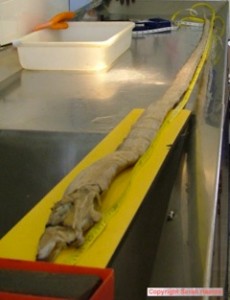
There are a number of reasons the Regalecids are so poorly known. They live in the open ocean and if caught at all it is usually as part of a commercial catch where scientific research is low down the list of priorities. Their delicate shape also means that they damage easily and often what is hauled on board is barely recognisable as fish, let along as a Regalecid.
Another reason is that they elude scientific surveys as they are perfectly camouflaged and are almost impossible to see. I know this may sound crazy – an 11m long shiny silver animal with a gigantic eye surely can’t be hiding, it’d be like dressing up as a mirror-ball and expect to be able to blend into the background. But actually, that’s precisely what they are doing.
Their morphology has evolved for a very specific environment: the mesopelagic zone. This zone, colloquially termed the ‘twilight zone’, is the transitional part of the ocean, where light is still visible when you look up but there is nothing but blackness when you look below. A fish that is swimming in the water column will be seen as a black silhouette against the light when viewed from below or will stand out against the black of the deep when viewed from above.
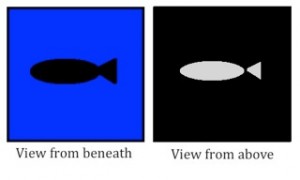 This makes mesopelagic fish vulnerable to predation so they have evolved a number of countermeasures. The first is to be laterally compressed. This means that there is less of them to block or reflect any light. If you cannot compress laterally then a second option is to countershade – make your belly light and your black dark. Pelagic sharks, fish and even birds do this – it’s why penguins wear tuxedos.
This makes mesopelagic fish vulnerable to predation so they have evolved a number of countermeasures. The first is to be laterally compressed. This means that there is less of them to block or reflect any light. If you cannot compress laterally then a second option is to countershade – make your belly light and your black dark. Pelagic sharks, fish and even birds do this – it’s why penguins wear tuxedos.
Now that attacks from above and below have been dealt with, attacks from the side must next be tackled. For this, light contrast isn’t so much of a problem, but uniformity is as fish present a uniform block of colour against a dappled background. And this is where the silver comes in. The reflective surface of the fish, combined with their undulating body, help break up the light and allow it to merge into the background. If you don’t believe me watch this video of an oarfish in its natural habitat.
These adaptations mean they are able to successfully hide from all but the luckiest of predators. Yet life is more than just about avoiding being eaten. It’s also about finding food. This is incredibly difficult in the sparsely populated open oceans. and it is here that the giant eyes come in. Unlike the bathypelagic zone where eyesight is largely redundant, here in the mesopelagic zone there is just enough light to see by. You’ll notice the large pupil which has evolved to catch every last photon of light in order to detect potential prey, who, it’s worth pointing out, have evolved the same anti-predation adaptations as the Regalecids. If you watch the video you’ll see that oarfish sit vertically in the water column, looking up towards the ocean surface so they can fully exploit their excellent vision and spot anything passing overhead. Prey are few and far between, and are constantly on guard against being eaten. To catch anything stealth and speed are essential. And this is where their weirdest adaptation comes into play.
Before I continue, I want to point out that what follows is pure speculation as I can find nothing in the literature that discusses this, the most bizarre aspect of Regalecid morphology. I thought it was unique to A. parkeri but closer inspection of photos and videos (this is R. russelii) indicates this is a feature common to the family. I am talking about their mouth.
At rest there is little of note.
It’s a bit strange in appearance, almost beak-like, but fish have evolved all sorts of weird appearances. Nothing to worry about, maybe.
Think again.
The ‘beak’ extends! It forms a sort of funnel and we (my former colleagues and I) speculated that this might be to try and change the water pressure to help suck prey in. The narrow tube quickly opens up into the wider ‘pouch’ towards the back. This suggests there will be rapid changes in water pressure but without proper study, and live observations, this is all complete conjecture which is crying out for research.
As if all that isn’t enough to pique your interest, there are reports that the live fish give electric shocks:
“Jason McKenzie reported that when he picked up the fish . . . he experienced what he described as mild but quite distinct pulsed electric shocks that passed up through his hand into the forearm at intervals of about 10 s. A companion who independently held the fish reported the same sensation.”1
There is nothing coherent I can say about that; it just blows my mind!
It’s a real shame the media frenzy has been so superficial. There is so little known about these animals: basic biology such as how long they live, how often they reproduce, how they find mates, what they eat and what eats them is all unknown. These new specimens will undoubtedly be studied exhaustively. The media hype will have died down by the time the results are published, but I recommend keeping an eye out as they will add so much more to the understanding of these magnificent, elusive animals.
1 McDowall, R M & Stewart, A L (1999). Further specimens of Agrostichthys Parkeri (Teleostei: Regalecidae), with natural history notes. Proceedings of the 5th Indo-Pacific Fish Conference, Noumea, 1997. pp165-174. Séret, B & Sire, J-Y, eds. Sociéte Française d’Ichthyologie, 1999, Paris.
Author and Picture Credits: Sarah Hearne, hearnes[at]tcd.ie, @SarahVHearne
A Raptor-ous Reception
Thanks to the DU ZooSoc, TCD staff and students were treated to an exhibition from Dublin Falconry last week. Set against the busy backdrop of joggers and Pav-frequenters, six beautiful birds of prey were the stars of their own lunch time show. Here’s a few pictures from the event, just a flavour of the stunning animals which we were privileged to see, touch (and hear!) up close. And for the full effect, have a look at Keith McMahon’s beautiful video.
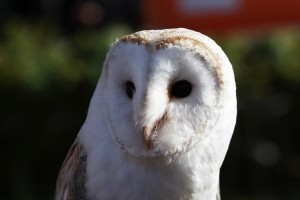
Barn Owl
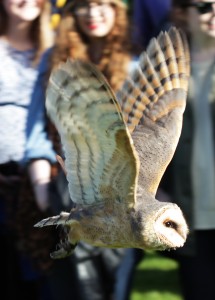
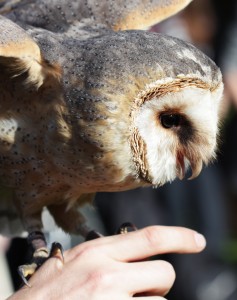
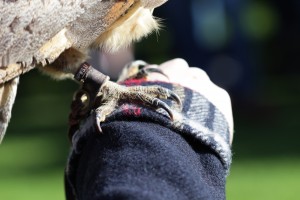
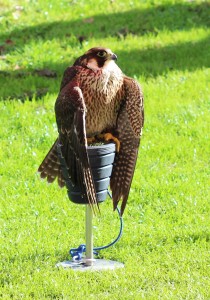
Peregrine falcon
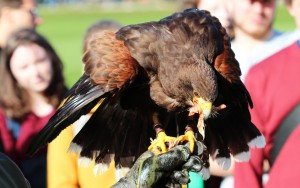
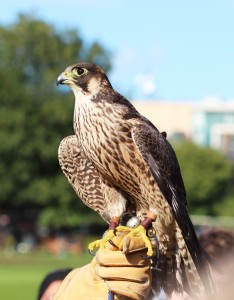
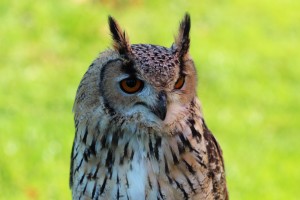
Bengal eagle owl
Author: Sive Finlay, sfinlay[at]tcd.ie, @SiveFinlay
Photo credits: Thomas Guillerme, guillert[at]tcd.ie, @TGuillerme
Night in the Research Museum
On Friday the 27th of September, as part of the Discover Research Night we opened the doors of the department to the public. We decided that since we have a museum full of some really cool stuff, we could use it to demonstrate some of the research in the department.
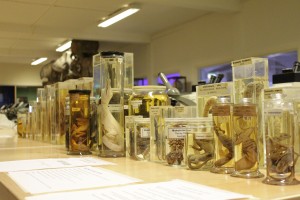
Since the research night had a mix of students, families and the generally curious we introduced each tour with some of the j-awesome teeth (I make no apologies for puns) to demonstrate the basics of ecology and evolution. So, with the help of Baleen, shark jaws, elephant molars and the jaw-dropping narwhal tusk we whetted the audience’s appetite to see just what evolution can do to modify a few teeth in order to match a particular ecology (okay I apologise for some of the puns).
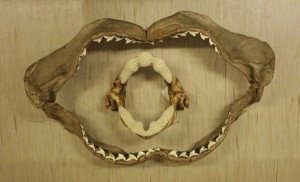
We then used some of the more mobile museum specimens (although the pilot whale skull we brought up from the basement would argue against that) to set up a game of “guess that longevity” to help explain some up and coming NERD club research.
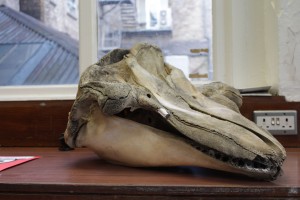
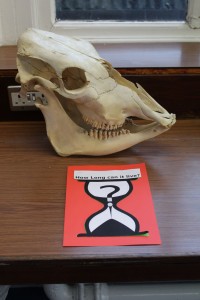
This worked really well and I think people became really engaged with the idea that there is so much variation in how long animals live, especially the sturgeon that can live over 150 years. It’s then an easy sell to explain the basis of our new paper which shows that species with lower external mortality (those that can avoid danger such as by flying) live longer than expected for their size (stay posted for more info on that soon!).
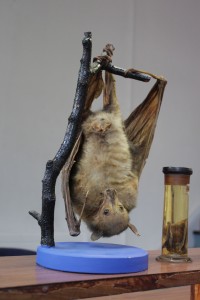
We finished up the tour by displaying some of our individual research such as some upcoming T.rex modelling (with added Jurassic Park music), a possible new bird species (and some spot the difference) and some obligatory lasers (one guy even came to ask if he could use the scanner for his golf clubs!?). It was also a great excuse to roll out those conference posters that are often treated like an Irish convertible that only gets a spin out once a summer!
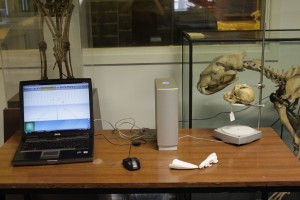
In the context of trying to engage the public with research I found it to be in complete contrast to my previous experiences as although we managed to get nearly 200 people into the department we really got the chance to explain face to face why what we do is interesting and cool (an easy task when holding a stuffed platypus) but then also explain some of the possible applications that might not be obvious (such as medical or ecological). It also allowed us to talk about the things that are interesting to the public themselves instead of continually telling them what they should be interested in.
All and all the night went great and I think everyone, including some of the specimens enjoyed the night!
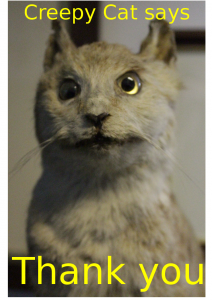
Author and Photo Credits:
Kevin Healy: healyke[at]tcd.ie, @healyke
NERD Club AGM
And we’re back!
The tea room is fuller, society stands are being dusted down to create the Front Square Fresher’s week gauntlet and venturing out of the office during the lecture change-over times will soon be inadvisable unless you have a particular affiliation for crowd control. Trinity is gearing up for the new semester and our blog has returned from its summer hiatus.
We marked the end of the summer with NERD club’s first annual AGM. Theoretically an acronym for our networks in ecology/evolution research discussion group but practically far more appropriate if you take the true sense of the word, NERD club is our weekly meeting for people working on any aspect of ecology or evolution. It’s a diverse collection of people and certainly one of my favourite times of the week as, fuelled by the necessary provision of biscuits, we discuss each other’s research or wider topics relating to academic research and scientific careers. It is also the origination of many of our previous and, I’m sure, future blog posts.
The AGM rounded off a very successful year for NERD club’s members. Between us we attended and presented our research at 19 different conferences or workshops, received 4 new grants and produced 28 new papers, one of which was a collaborative effort arising from a NERD club discussion. We also contributed to an eclectic mix of science communication and outreach projects including radio and television interviews, blog and magazine articles and guided tours of the Zoology museum. We came up with plenty of new topics for discussion and teaching sessions along with ideas for future collaborations so I’m sure the year ahead will be equally if not more interesting.
Our NERD club awards were a fitting conclusion to a great year. Here’s the honour roll!
1) Best NERD club session of the year: Erin Jo for her research on toxic nectar and bees.
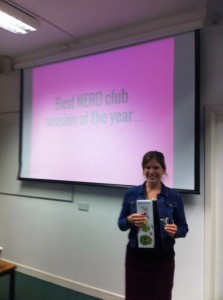
2) Best blog post of the year: Deirdre for her advice on coping with cuteness overload.
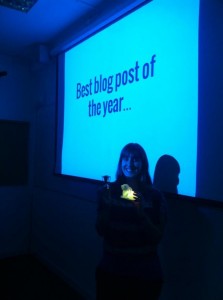
3) Best blog post pun: Keith for Apocalypse Meow!
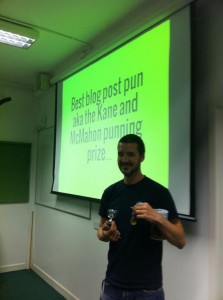
4) Cutest study species: Sive for tremendous tenrecs (an unfair advantage when you consider that I study these!
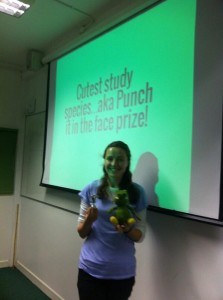
5) Most annoying PI, aka the devil’s advocate: A draw between Natalie, Andrew and Ian.
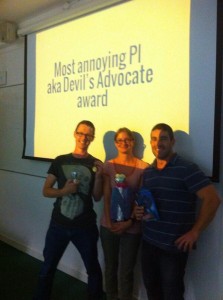
6) Best threesis video: Thomas, for explaining phylogenies by means of baking…
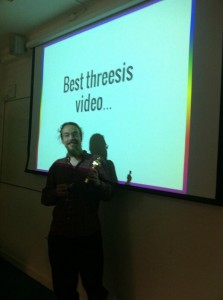
Author
Sive Finlay: sfinlay[at]tcd.ie
@SiveFinlay
Photo credits:
Natalie Cooper
(Science) Summer Holiday!
We’re all going on a (science) summer holiday!
EcoEvo@TCD will be taking a short break for the summer so we won’t be updating the blog through July and August. Between us I think we’re attending five or six conferences, giving almost 20 talks and posters, and visiting three different continents, all for SCIENCE! Some of us are also taking a well-earned break. I am currently hiking around the wilds of Yellowstone attempting to spot wolves, bison, and moose, and aiming not to get eaten by bears! When we get back we’ll report on the highlights of conference season and bring you more ecology and evolution related news, views and advice.
I hope you all have a safe, fun and productive summer! See you September!
Author
Natalie Cooper: ncooper[at]tcd.ie
Photo credit
Wikimedia commons


